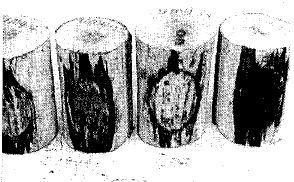
Journal of Arboriculture 9(12): December 1983 325


Figure 11. Four 1-year-old wounds on one red oak; from left to right: rosin acid I, Treekote, shellac, and control. Very little cambial dieback was associated with these wounds.
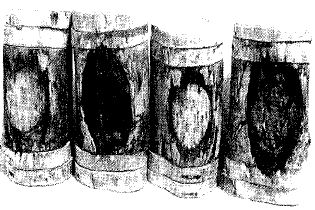
Figure 12. All 1-year-old wounds on this red maple had similar areas of cambial dieback; from left to right: control, Treekote, rosin acid I, and shellac.
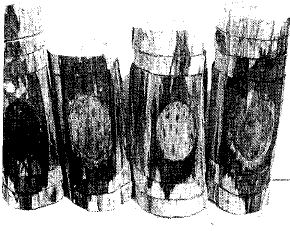
Figure 13. All 1-year-old wounds on this red maple had large similar areas of cambial dieback; from left to right: treekote, control, rosin acid I, and shellac. Boring insects infested the wood above and below the wounds, and were responsible for the large areas of dieback.
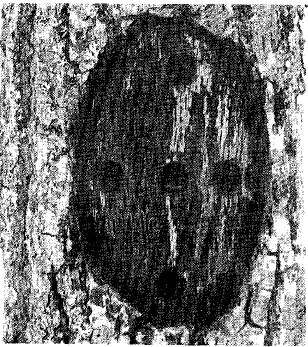
Figure 14. Template drill wounds on red oak after 1 year. The Cabot dressing often peeled.

Figure 15. Template drill wound on red after 1 year. The wound surface blended with the bark.
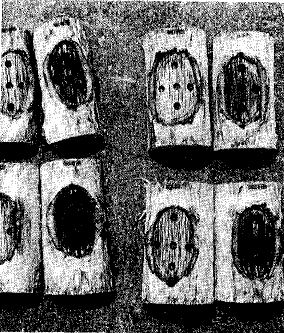
Figure 16. Thick bands of callus formed on control wounds on those treated with Cabot paint on white oaks after 1 year. Four wounds on one tree, left, and four wounds on the other tree, right. Note peeling of paint on treated wounds.
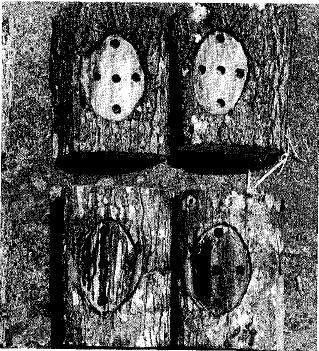
Figure 17. Poor callus formation on two control wounds, upper, and two Cabot-treated wounds, lower, on one red maple after one year. Note peeling of paint.
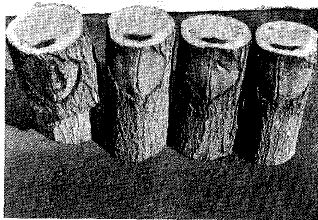 Figure 18.
All wounds on this red oak were closed after 7 years, and only small pockets of
discolored wood were associated with the wounds; left to right: Treekote,
control, shellac, and rosin acid I.
Figure 18.
All wounds on this red oak were closed after 7 years, and only small pockets of
discolored wood were associated with the wounds; left to right: Treekote,
control, shellac, and rosin acid I.